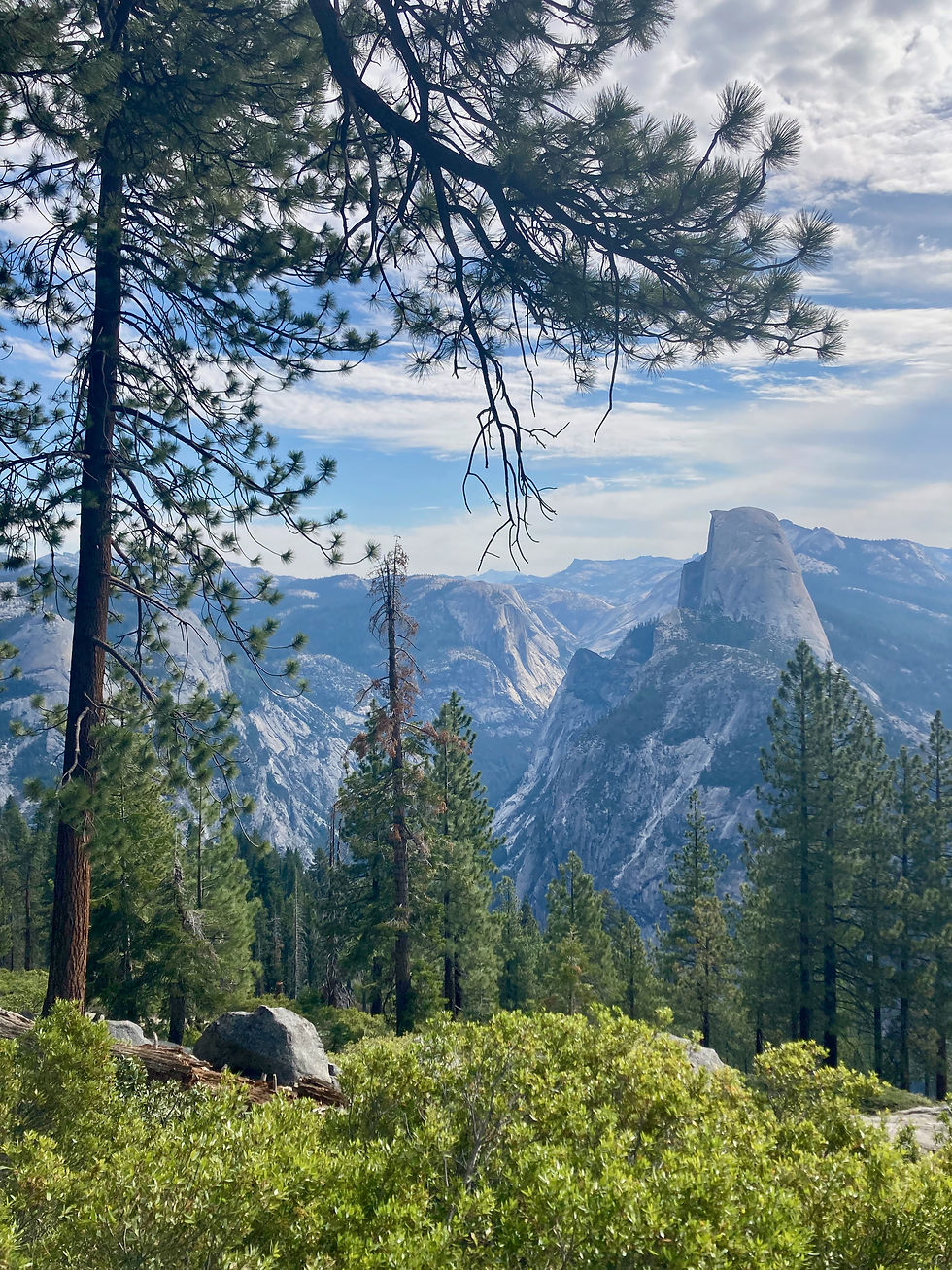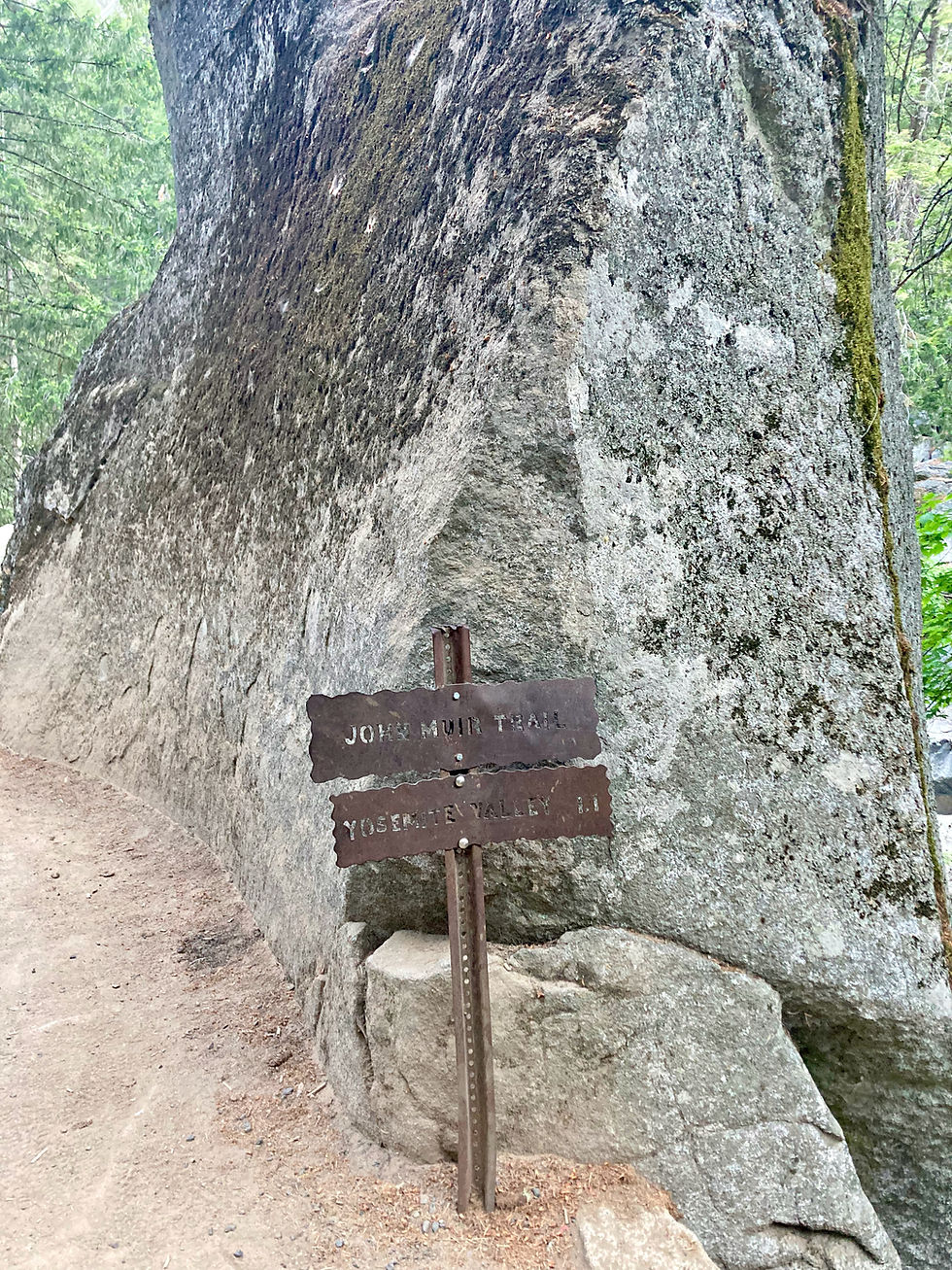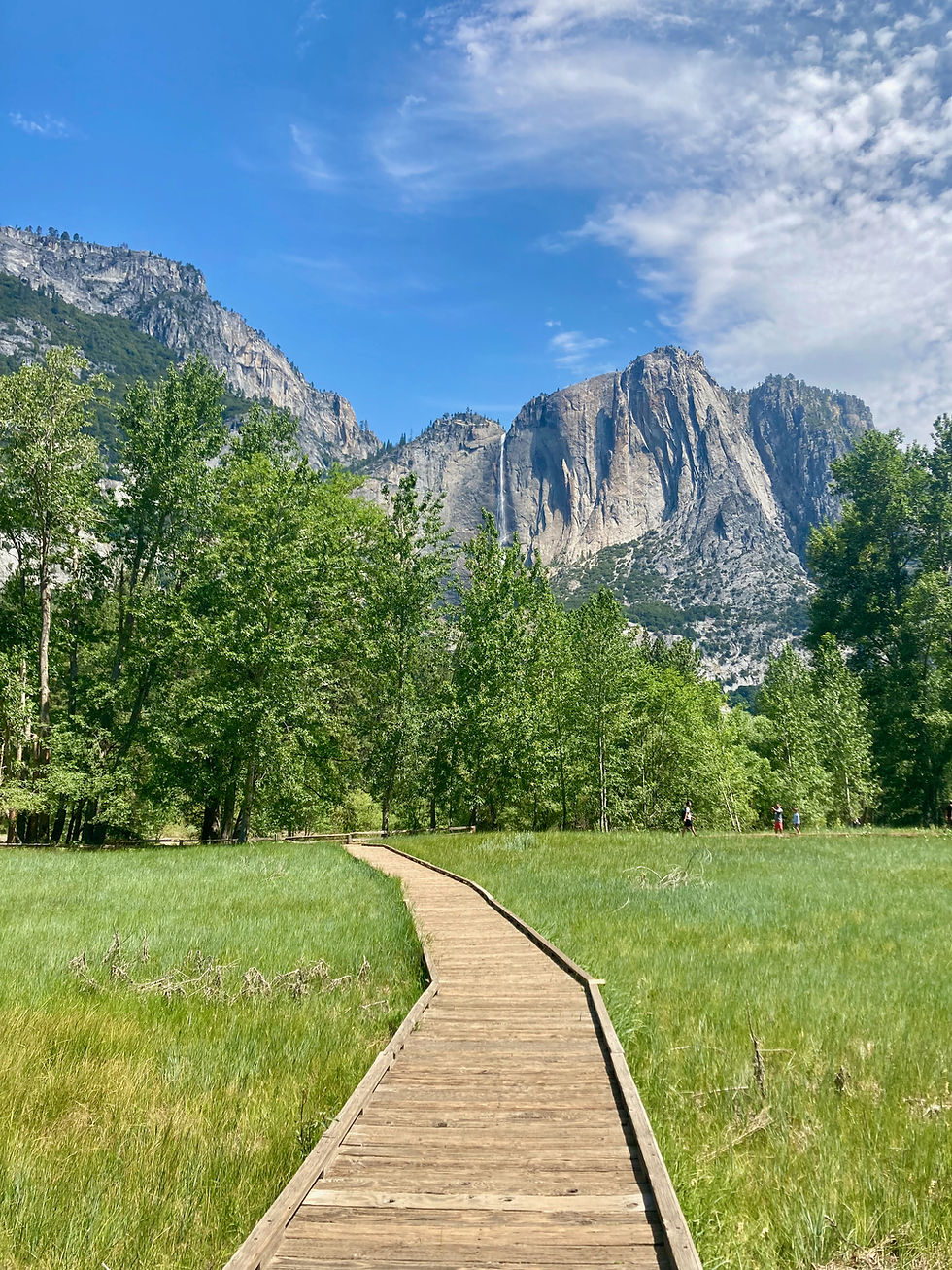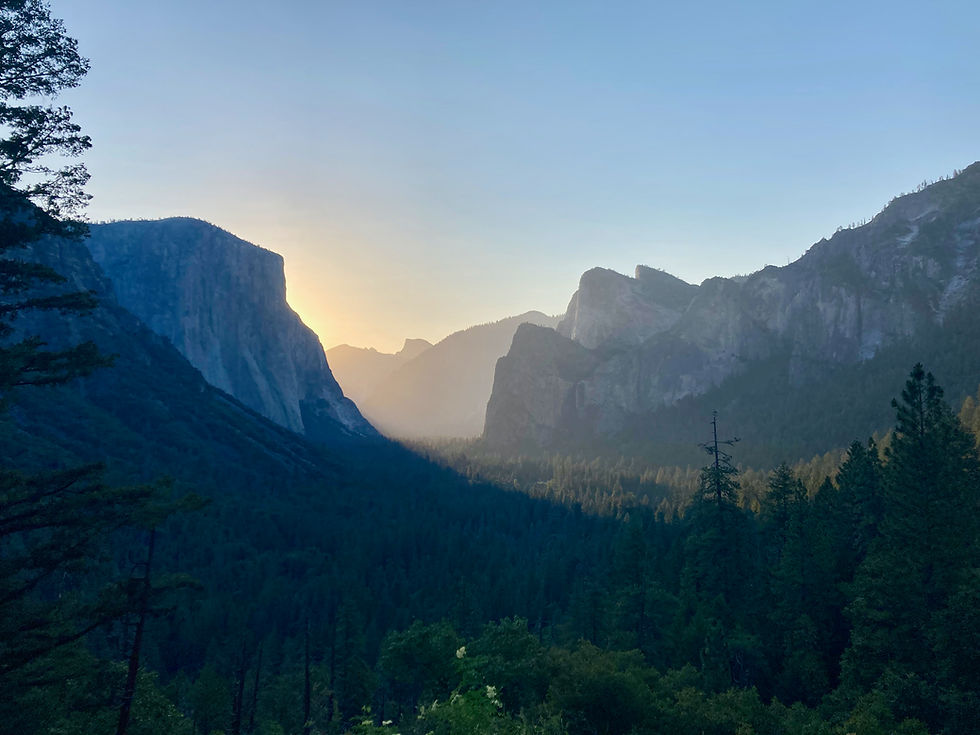Verse: Psalm 8
Fun Fact: Yosemite was the nation’s third national park, but the first area of land set aside by the US government for preservation and protection.
Favorite Hike: Vernal and Nevada Falls
Yosemite National Park is one of the country's most iconic national parks, known for its granite cliffs, waterfalls, and meadows. Perhaps the most well-known of its features is Half Dome, a granite rock formation 8,839 feet above sea level. You can visit Glacier Point Lookout to get a spectacular view of Half Dome, one of the best views of any national park. You can also hike to the summit of Half Dome, but it takes some work; it involves a 14–16-mile hike with a lot of elevation gain. The last 400 feet to the summit require a permit and consist of just two metal cables. Vernal and Nevada Falls is another popular hike. It is the route you take to get up to Half Dome and some other backpacking routes.

While the park is roughly the size of Rhode Island, with nearly 800 miles of hiking trails, most visitors spend the majority of their time in the seven square miles of Yosemite Valley. You can easily walk or bike the 12-mile full loop trail to take in all the scenery of the valley. Yosemite Valley also has Yosemite Village, where you can find a post office, dining hall, full grocery store, and gift shop, as well as the Ansel Adams Art Gallery. You may recognize Ansel Adams’ famous black and white photos from the 1920s and 30s showcased the park's beauty.
If you want to explore other parts of the park, Tuolumne Meadows is about 1.5 hours from Yosemite Valley and worth the drive. A much less crowded section of the park, Tuolumne is a stopping point for many backpackers on the Pacific Crest and John Muir Trails. On the drive to Tuolumne, you can stop at a number of lookouts, hikes, and lakes, such as Olmsted Point and Tenaya Lake. If you prefer to spend more time in the wilderness, look into securing a permit for one of the backcountry high sierra camps.
While Yosemite wasn’t the first official national park (that honor goes to Yellowstone in 1872), it certainly paved the way. Growing concerns over logging and other commercial interests led to the establishment of the Yosemite Grant by President Abraham Lincoln in 1864. This marked the first time in history that a piece of land was protected for the enjoyment of the people rather than financial benefit from the natural resources. Yosemite later became a national park in 1890. However, the initial park establishment did not include the valley and sequoia groves.

Thanks to the efforts of John Muir and a camping trip he took with President Theodore Roosevelt in 1903, additional land was added to the park in 1906 to establish the park as we know it today. If you hike Vernal or Nevada falls, you will cross the John Muir Trail, a 211-mile-long trail named after the environmentalist. The trail starts in Yosemite Valley and continues through the Sierra Nevada Mountains into Kings Canyon and Sequoia National Park, ending at the summit of Mount Whitney. John Muir played a critical role in the early conservation of America’s National Parks and wrote extensively about his experiences.
Theodore Roosevelt and John Muir both wrote about the beauty of Yosemite National Park, in almost spiritual descriptions, referring to the park as a temple and expressing the refreshment it provided to the soul:
“Yosemite is by far the grandest of all the special temples of nature I was ever permitted to enter.” ― John Muir
“[Camping in Yosemite] was like lying in a great solemn cathedral, far vaster and more beautiful than any built by the hand of man.” ― President Theodore Roosevelt
One of John Muir’s most popular books, My First Summer in the Sierras, records the summer of 1869 where John spent four months tending sheep in the Yosemite Valley and High Sierras.
“Oh, these vast, calm, measureless mountain days, inciting at once to work and rest! Days in whose light everything seems equally divine, opening a thousand windows to show us God. Nevermore, however weary, should one faint by the way who gains the blessings of one mountain day; whatever his fate, long life, short life, stormy or calm, he is rich forever. - My First Summer in the Sierra, John Muir
John Muir grew up in a religiously disciplined Christian home. He and his seven siblings were allowed no reading material outside of the Bible, and they were made to memorize all of the New Testament and much of the Old (a practice that served him well in the wilderness as he was able to recall by memory so much of scripture). John’s interests in geology and botany were not welcomed by his father, who viewed the study of these subjects as wicked and blasphemous. As Muir grew up and pursued these interests, and visited places such as Yosemite and the Sierras, you see through his writing this blend of spiritual and scientific reasoning. Muir has often been criticized for worshiping creation rather than the creator and viewing nature itself as salvific, rather than the gospel of Christ. Despite this critique, Muir’s writings undeniably speak to the creator, His goodness and how the beauty of the parks displays the nature and glory of God. John’s ability to write with such vivid detail, poeticism, and eloquence can serve as an encouragement to us.

I pray as you visit Yosemite National Park, you see this same beauty, and that it leads you to a posture of praise to the One who created it all and created us to appreciate it. Muir wrote that nature is overflowing with the grandeur of God. May your time in the Sierras leave you equally in awe.
Of all the mountain ranges I have climbed; I like the Sierra Nevada the best. Though extremely rugged, with its main features on the grandest scale in height and depth, it is nevertheless easy of access and hospitable; and its marvelous beauty, displayed in striking and alluring forms, woos the admiring wanderer on and on, higher and higher, charmed and enchanted. Benevolent, solemn, fateful, pervaded with divine light, every landscape glows like a countenance hallowed in eternal repose; and every one of its living creatures, clad in flesh and leaves, and every crystal of its rocks, whether on the surface shining in the sun or buries miles deep in what we call darkness, is throbbing and pulsing with the heartbeats of God. - John Muir








Comments